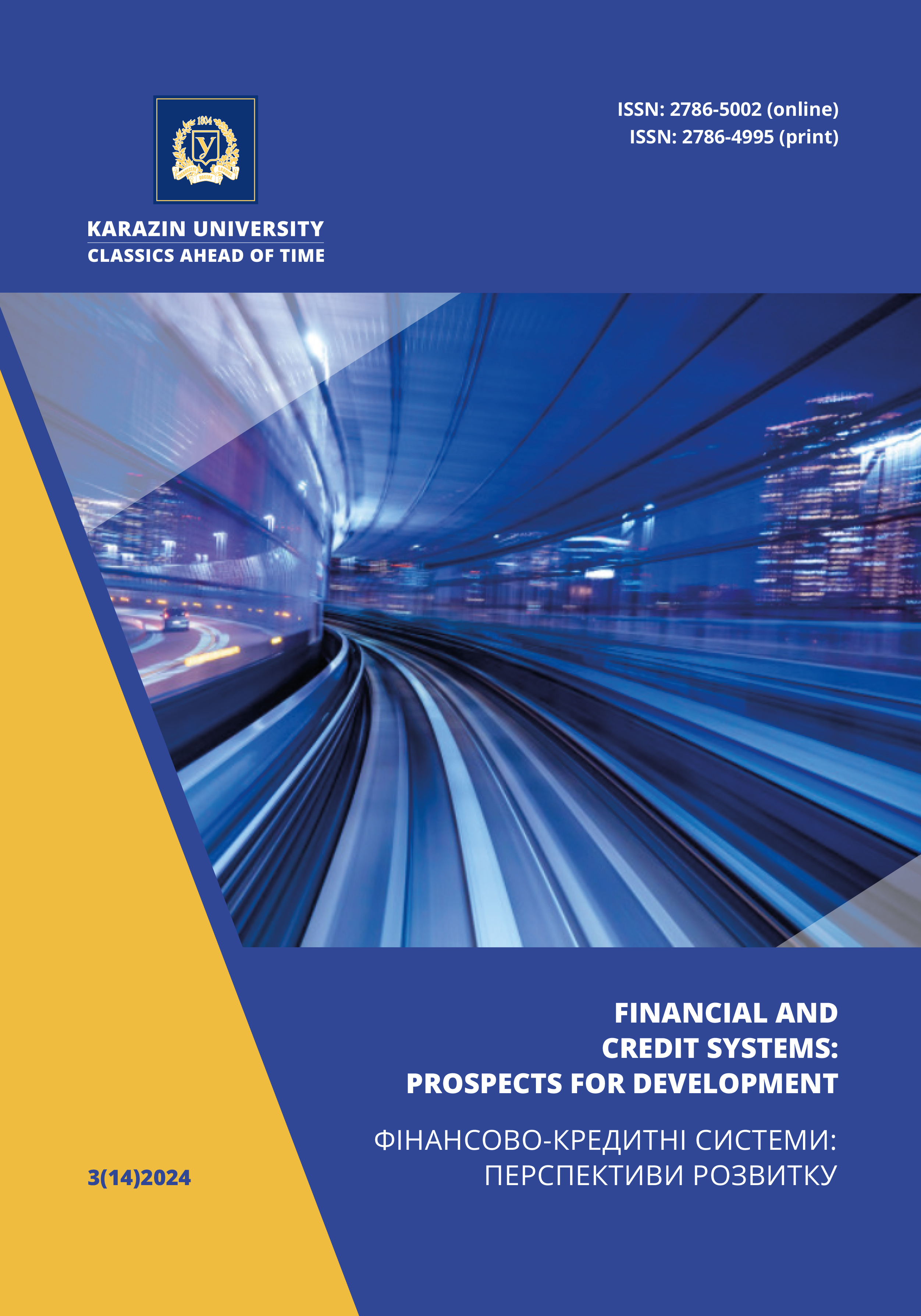Business intelligence and its role in raising the level of corporate services
Abstract
Artificial intelligence has begun to show itself in all areas of the changing business world. With the introduction of new technologies in the digital age, business structures have to adapt to new projects and increase the productivity of business processes. The purpose of the study is to clarify the ways of using business intelligence tools to raise and increase the level of services within companies. As a result of the stated objective, we identified the following tasks: 1) to determine the role of business analytics in forming the company's development strategy; 2) to propose solutions for improving internal company services using business analytics tools; 3) to outline the framework for building business analytics (BI) within the company.
This study presents the concept of business intelligence and its importance in raising the level of service delivery in companies. For this purpose, Deming's course was used, were to find and provide some solutions, represented in the final decision-making process regarding the process of improving and providing services to companies. In other words, helping the general manager to see what is hidden from the eye, depending on the data and methods of processing it. In addition to the above, the stages involved in the development process were shown in the form of a data flow diagram, which is known as the Data Flow Diagram (DFD) for the system used within the company.
The results of this study are summarized as follows: а) this study presents a clear and simplified concept for solving all the tasks mentioned in this study; b) submitting a proposal to solve the problem of improving services within the company by using business intelligence tools; c) this study presents a data flow diagram that selects the appropriate agile process for that purpose; d) this study presented a partial development of the system in force in the company.
Downloads
References
Mansour, Yasser Mansour Haj Rashid (2020). Total Quality Management in the Jordanian Health Sector: A Comparative Field Study, PhD thesis in Public Administration, University of Baghdad, unpublished.
Abu Nabaa, Abdel Aziz and Massad, Fawzia (2010). Towards the Application of Total Quality Management: An Exploratory Study of the Opinions of a Sample of Deans and Students of Al-Ahliyya Amman University, Journal of Administration and Economics, Al-Mustansiriya University, Issue 27.
Banday, Shabir Hassan & Nusair, talal (2020). Application of total Quality management in Educational institutions, Economic Horizons, Vol. 23, No. 90.
Bezverkhyi, K., Hnylytska, L., Yurchenko, O., & Poddubna, N. (2023). Analytical procedures of the audit of integrated reporting of corporate enterprises. Financial and Credit Activity Problems of Theory and Practice, № 3(50), pp. 87–101. https://doi.org/10.55643/fcaptp.3.50.2023.4045.
Jeamoon, M.J. (2000). Organizational commitment revisited in new publicmanagement: motivation, organizational culture, sector, and managerial level, Public Performance & Management Review Journal, 24 (2), pp. 177-194.
Paul, F. (2004). Quality management as a systematic management philosophy for Use in non-profit organizations, (Unpublished masterthesis), Capella University, USA.
Jun, M., Cai, S., & Shin, H. (2006). TQM practice in Maquiladora: antecedents of employee satisfaction and loyalty, Journal of Operations Management, 24 (6), 791-812.
Goetsch, David L. & Davis, Stanley B. (1997). Introduction to total Quality, Quality management for production processing and services (2nd ed.), New Jersey, Prentice Hall.
Bounds,Greg & yorks, Lyle & Adams, meland & Ranney, Gipsie (1994). Beyond Total Quality management, U.S.A, MC Graw- HiLL.
Al-Qazzaz, Ismail Ibrahim and Abdul-Malik, Adel (2004). Self-evaluation and the process of continuous improvement, according to the guidelines of ISO 9004: 2000, 1st Edition, Baghdad, Al-Mashhadani Office for Printing and Reproduction.
Ranjith,V. (2016). Business Models and Competitive Advantage. Procedie Economics and Finance, Volume 37, pp. 203-207. https://doi.org/10.1016/s2212-5671(16)30114-9.
Russell, S, Roberta & Taylor, W, Bernard. (2009). Operations Management: Focusing on Quality & Competitiveness. 6th edition. New Jersey. Prentice – Hall Inc.
Sekaran, & Bougie, (2010). Research Methods for Business A Skill-Building Approach. 4th Edition, John Wiley & Sons, New York.
Solomon, Michael, R., Marshall, Greq, W., & Stuart, Elnora, W. (2009) Marketing: Real People, Real Choices. 6th edition, New Jersey. Prentice – Hall Inc.
Jassar, A. T. A. (2023). Forming commands for voice control in kaldi environment based on jspeech grammar format technology. Journal of Theoretical and Applied Information Technology, Volume 101(13). Pp. 5085-5093. URL: http://www.jatit.org/volumes/Vol101No13/2Vol101No13.pdf.
Westland, J. (2006). The project management life cycle: A Complete Step-By-Step Methodology for Initiating, Planning, Executing & Closing a Project Successfully (1 ed.). United Kingdom: Kogan Page Limited.
Peter, P.W., Namusonge, M., Waema, C., & Ngonzo, C.L. (2014). Competitive Strategies’ Effects on the Market Share of Independent Petroleum Companies in Kenya. International Journal of Innovative Research and Development, Volume 3(5), pp. 149-153.
Majed Mahbashi, (2007). Benefits & Difficulties in Implementing TQM in the Construction Industry, College of Environmental Design, King Fahd University of Petroleum & Minerals.
McCabe, S. (2014). Quality improvement techniques in construction: principles and methods: Routledge.
Nee, P.A. (1996). ISO 9000 in construction: John Wiley & Sons.
Naliaka, V.W., & Namusonge, G.S. (2015). Role of Inventory Management on Competitive Advantage among Manufacturing Firms in Kenya: A Case Study of UNGA Group Limited. International Journal of Academic Research in Business and Social Sciences, Volume 5(5), pp. 87-104.
Nazarova, K., Bezverkhyi, K., Hordopolov, V., Melnyk, T., & Poddubna, N. (2021). Risk analysis of companies’ activities on the basis of non-financial and financial statements. Agricultural and Resource Economics: International Scientific E-Journal, Volume 7(4), pp. 180-199. https://doi.org/10.51599/are.2021.07.04.10.
Shygun M., Bezverkhyi K., Pylypenko O., Yurchenko O., & Poddubna N. Presenting financial information in digital formats as a base for analysis and audit of business activities of enterprises. Financial and Credit Activity Problems of Theory and Practice, 2023, Volume 6(53), pp. 233–246. https://doi.org/10.55643/fcaptp.6.53.2023.4165.
Copyright (c) 2024 Financial and credit systems: prospects for development

This work is licensed under a Creative Commons Attribution 4.0 International License.

